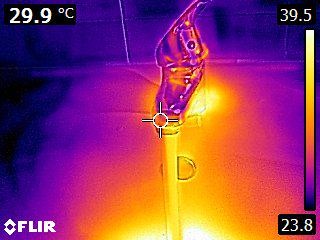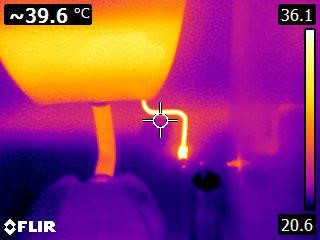An infrared, IR or thermal imaging camera works by detecting and measuring the infrared radiation emanating from objects - in other words, their heat signature. In order to do so, the camera must first be fitted with a lens that allows IR frequencies to pass through, focusing them on to a special sensor array which can, in turn, detect and read them.
The sensor array is constructed as a grid of pixels, each of which reacts to the infrared wavelengths hitting it by converting them into an electronic signal. Those signals are then sent to a processor within the main body of the camera, which converts them using algorithms into a colour map of different temperature values. It’s this map which is sent on to be rendered by the display screen. Many types of thermal imaging camera will also include a standard shooting mode that works with the visible light spectrum, much like any other point-and-click digital camera. This allows for easy comparison of two identical shots - one in IR and one in normal mode - to help quickly identify specific problem areas once the user steps out from behind the lens.


Contact us anytime, we are always available.
1800 99 58 58